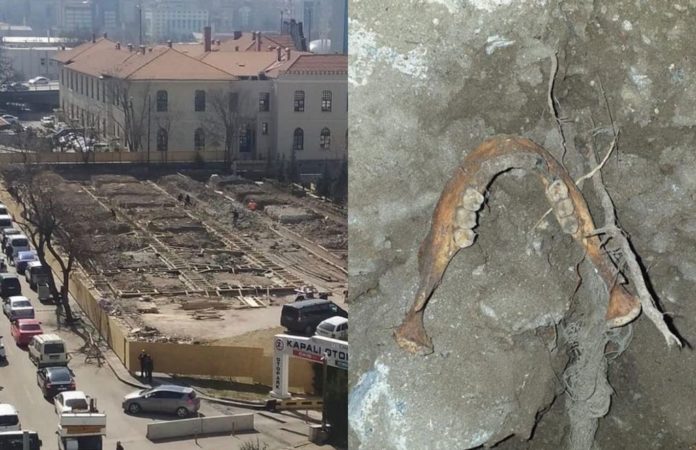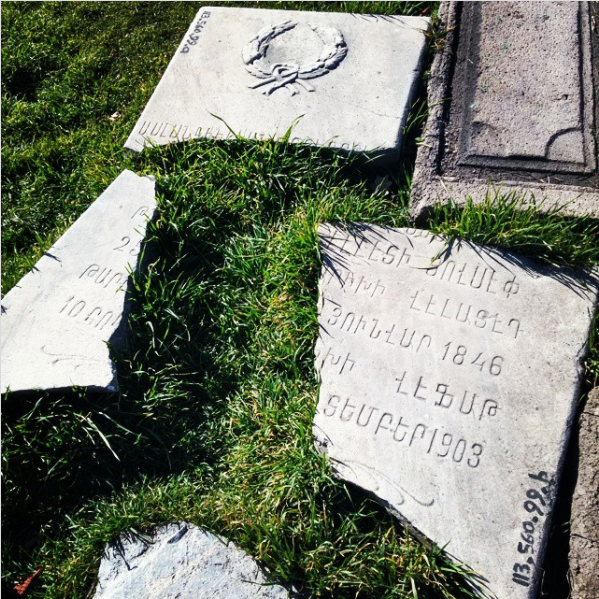ANKARA – A bit of an erased past has been rediscovered in Turkey when recent excavations on the site of the former İller Bankası building in Ankara uncovered bones of the city’s former Armenian population. The discovery exposes the complicated layers of Ankara’s history from the past century and is a reminder of the erased indigenous populations upon which the foundation of the modern state of Turkey was built, both figuratively and apparently literally as well.
Ankara of the early 20th century (then known as Angora) was a much smaller place than the capital city of today. By World War I, it had an Armenian population of just over twenty thousand, 70% of whom were Catholic (see Raymond H. Kevorkian and Paul B. Paboudjian, Ermeniler: 1915 Öncesinde Osmanlı İmparatorluğu’nda, page 212). Armenian Ankara had a Catholic cathedral which was the seat of a bishop, three Catholic churches and three Apostolic ones. It had Catholic and Apostolic schools as well as Protestant institutions.
Life as they knew it came to an abrupt end in August 1915 as a result of the genocidal actions going on throughout the Ottoman Empire, the primary predecessor state to the Republic of Turkey. In fact, according to Viscount Bryce’s account in The Treatment of Armenians in the Ottoman Empire, the governor-general of Angora had refused to carry out the central government’s deportation order and so was dismissed and replaced by a Committee of Union and Progress party operative who would. The town was largely emptied of its Armenian population, but the erasure had just begun.
A year after the deportations, a devastating fire tore through Angora. A precursor to the much more famous 1922 Great Fire of Smyrna, the Angora fire’s exact cause is similarly disputed but is almost certainly tied to the deportations. As in Smyrna, it began with simultaneous fires in various places throughout the Armenian quarter and any alleged perpetrators who might have caused it were never brought to justice. It is unlikely a coincidence that this period saw many fires in other cities as well that, as in Angora, were centered in the Christian-inhabited quarters.
Many eyewitness accounts state that the Angora fire, which raged for days, originated in the recently emptied Armenian Catholic neighborhood, and that not only were those who tried to stop it hindered but that others were seen pouring kerosene onto buildings in order to help it spread. Seven out of the eight totally burned districts had been only populated by Christians and Jews, and every single Armenian church was destroyed. The few Armenians who had survived the deportations and attempted to continue living in their native town had their last ties to it immolated by the fire, and now having truly lost everything, it reinforced the impossibility for them to continue living in Angora. They joined the surviving Armenians who had fled to Istanbul after the deportations.
Largely forgotten now, the aims of these acts were not merely to expel the Armenians but to ensure they could never return, while erasing all trace that they had once been there. Besides the fires, erasure was enacted through land confiscations, the dynamiting of churches and monasteries throughout Turkey, and the kidnapping and Islamicizing of survivors.









